Tired of high electricity bills and the hassle of constantly changing light bulbs? Discover how switching to modern LED lighting can significantly cut your household costs and make your life a bit easier. This practical guide will illuminate the simple ways LED technology helps you save money, step by step.
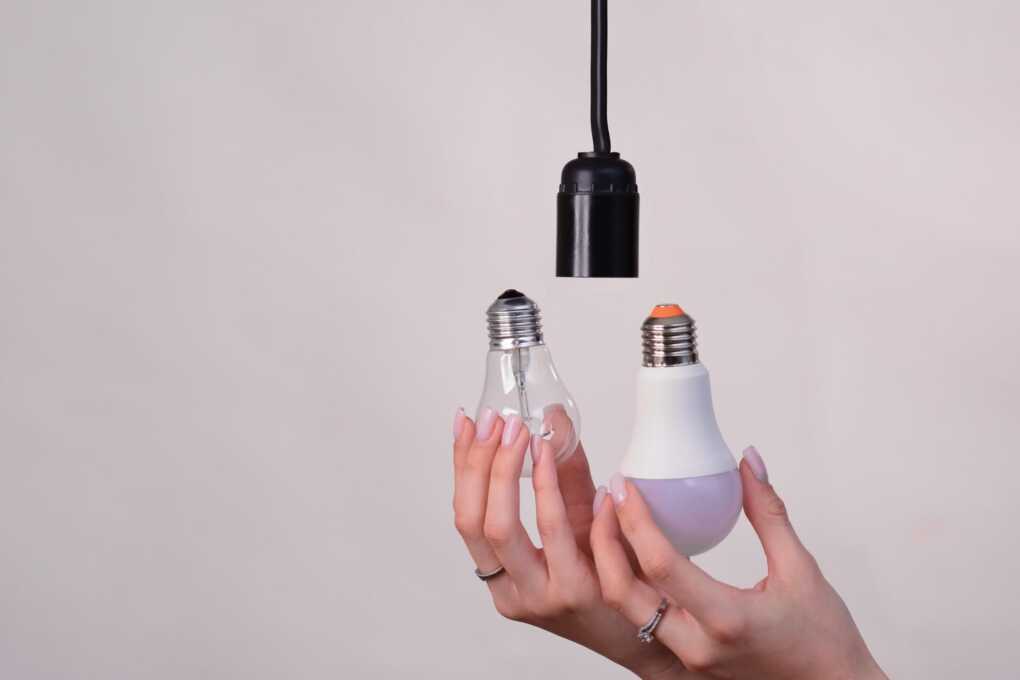
Understanding the magic behind LEDs – Why they cost less to run?
Ever wondered why everyone’s talking about LED lights and how they can slash your energy bills? It’s not magic, but it’s pretty clever science! Let’s break down why these modern marvels are so good at saving you money by looking at how they work.
What is LED technology? A simple explanation
At its heart, an LED, which stands for Light Emitting Diode, is a tiny semiconductor device. Think of it as a small chip that lights up when an electrical current passes through it. This is fundamentally different from how old-style bulbs work.
You see, LEDs are different. Traditional incandescent bulbs (the ones with the glowing wire) and even CFL bulbs (the spiral ones) have more complex, and often less efficient, ways of producing light. LED technology is a game-changer because it converts electricity into light much more directly. It’s a rapidly developing lighting technology that keeps getting better, offering us brighter and more efficient ways to light up our homes and workplaces. The core component, the light emitting diode LED, is what makes all these benefits possible.
The big difference: Energy efficiency
The biggest reason LEDs save you money is their incredible energy efficiency. Here’s the deal: Traditional incandescent bulbs release 90% of their energy as heat, not light! That’s a lot of wasted electricity you’re paying for, which simply warms up the room. LEDs, on the other hand, are masters of conversion. They turn a much higher percentage of electricity directly into light, producing very little heat in the process.
This makes them a form of highly energy efficient lighting. When a light bulb is more energy efficient, it means it needs far less electricity to produce the same amount of brightness as an older, less efficient bulb. This directly translates to lower electricity consumption, which you’ll see reflected in your energy bills. We’ll dive into how this impacts your bills in a later section, but understanding this core efficiency is key.
How LEDs emit light?
Another clever aspect of LEDs is how LEDs emit light. Traditional bulbs often scatter light in all directions (360 degrees). If you want to direct that light, say, downwards onto your desk, the fixture needs reflectors and diffusers, which can trap some of the light, making them less effective.
LEDs, however, have a directional nature. The direction LEDs emit light is typically more focused (often 180 degrees or less). This means:
☑️ Less light is wasted lighting up ceilings or the inside of fixtures.
☑️ More light goes exactly where you need it.
This targeted approach means you can often use a lower-brightness LED (which uses even less energy) to achieve the same useful illumination as a brighter, but less directional, traditional bulb. This inherent focus contributes to their overall efficiency and, consequently, the money they save you.
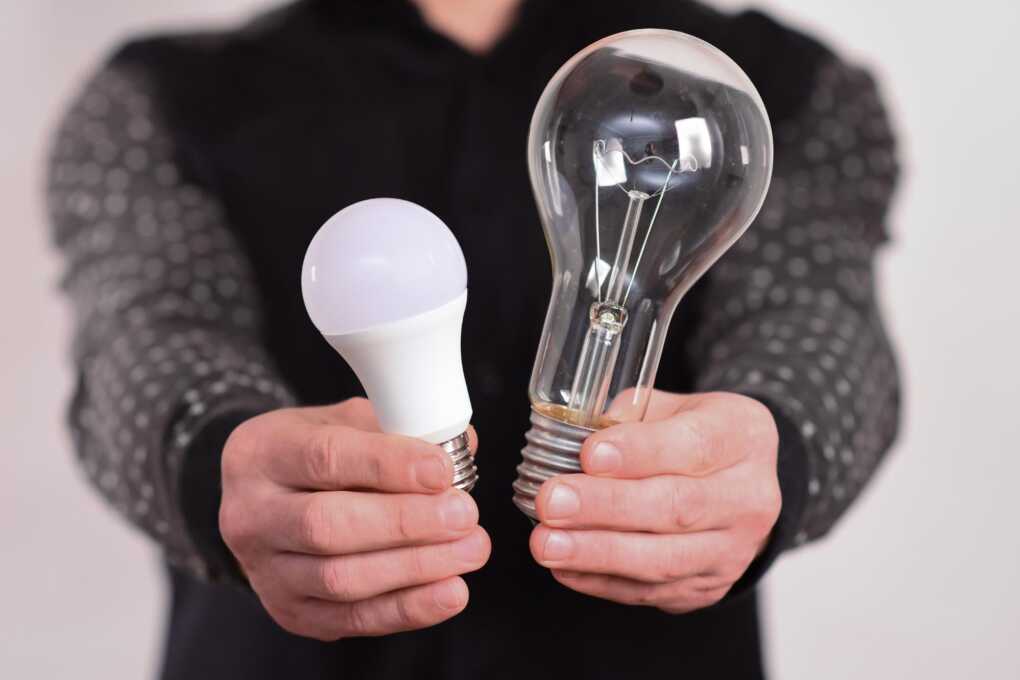
Calculating your direct savings with LEDs
Now that you know LEDs are super efficient, let’s get to the exciting part: seeing how this efficiency translates into real money in your pocket. The direct savings come from two main areas – using less electricity and buying fewer bulbs.
Slashing your energy bills
This is where you’ll see the most immediate impact. Because LED light bulbs use so much less electricity for the same amount of light, your energy consumption for lighting plummets.
Let’s make this super practical with a quick example:
Step 1: Look at your old bulb. Let’s say you have a traditional 60-watt incandescent bulb.
Step 2: Find its LED equivalent. A comparable LED light bulb might only use 9 watts to produce the same brightness.
Step 3: See the difference. That’s 51 watts saved every hour the light is on (60W – 9W = 51W)!
Step 4: Multiply the savings. Now, imagine this: You have several of these bulbs in your home. They’re on for several hours a day. Over weeks, months, and a year, this difference adds up to significant energy savings on your energy bills.
This reduction in energy use is one of the primary sources of energy savings from LED lighting. The less energy your lights consume, the less you pay your electricity provider. Simple as that!
Goodbye frequent bulb changes: The long lifespan of LEDs
Another fantastic way LEDs save you money is their incredibly long lifespan. LED light bulbs last so much longer than incandescent lighting. A typical incandescent bulb might last around 1,000 to 2,000 hours. Many quality LED light bulbs, however, can last 15,000 hours, 25,000 hours, or even more! The lifetime LED lighting products typically offer is a huge advantage.
Think about what this means. You’ll be buying replacement bulbs far, far less often.
Practical tip: Imagine over the lifespan of one good quality LED bulb (say, 20,000 hours), you might have had to buy 10 to 20 incandescent bulbs. If an incandescent bulb costs £1 and an LED costs £5, you would spend £10-£20 on incandescents versus just £5 for the LED over that entire period – and that’s before even counting the energy savings!
For most LED bulbs, especially those of decent quality, this longevity drastically cuts down on the money and hassle spent on replacements.
The declining cost of entry: Why now is a great time to switch
Perhaps you looked at LED bulbs a few years ago and thought they were a bit pricey. Well, things have changed for the better! We’re seeing constantly dropping prices for LED lamps. This is thanks to advancements in LED technology, more availability, improved manufacturing efficiency, and general performance improvements and dropping prices across the board.
While the upfront cost of an individual LED bulb might still be a little higher than an old incandescent bulb, the crucial point is the total cost of ownership.
When you factor in the massive energy savings and the dramatically longer lifespan, the initial investment in LED bulbs is usually recouped very quickly. After that break-even point, it’s all savings. This means you can now affordably and effectively replace your old, inefficient bulbs with modern LEDs and start saving sooner.
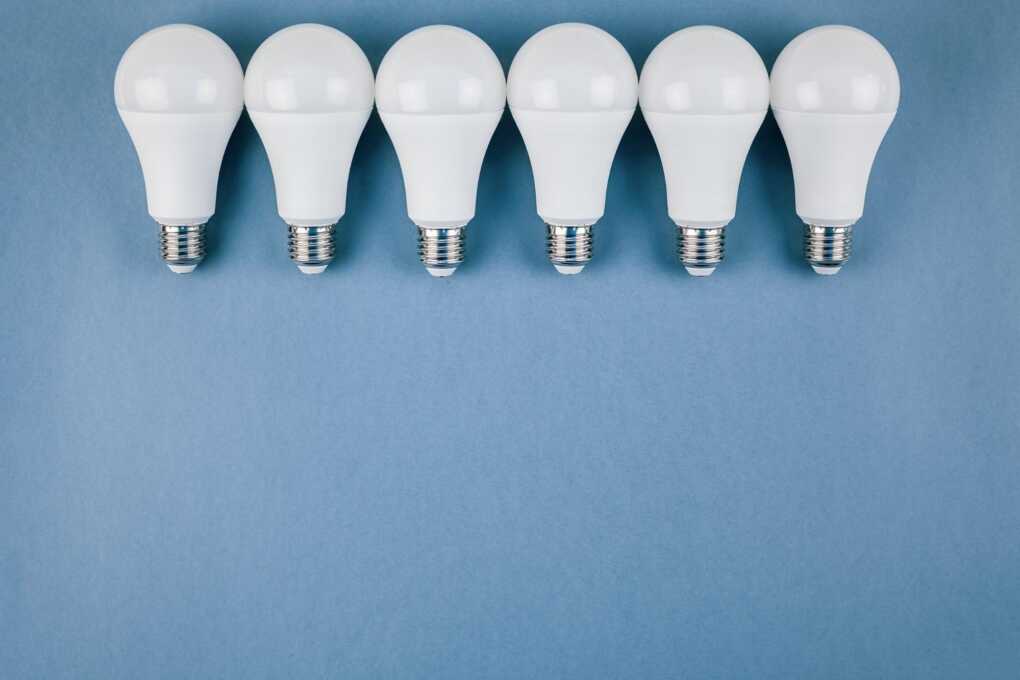
Getting started: Practical guide to switching to LED lighting
Ready to make the switch and start saving money with LEDs? Great! It might seem like there are a lot of options, but breaking it down into simple steps makes the process easy. Here’s your practical guide to get you started.
Step 1: Identify where you use lights most
To see the quickest energy savings, it’s smart to start with the lights you use most often. Think about your home:
☑️ Are your kitchen lights on for several hours a day?
☑️ What about the living room where you relax in the evening?
☑️ Hallways and landings also often have lights on frequently.
Prioritizing these high-usage areas means the energy efficiency of LEDs will start benefiting your wallet sooner. Don’t forget about specialized lighting either; for example, many homes have recessed downlights. In fact, there are literally millions of recessed downlights installed in homes, and there are excellent LED alternatives for these, making residential LEDs, especially energy-efficient ones, a great upgrade for these common fixtures.
Step 2: Understanding lumens (brightness), not watts
For years, we’ve bought bulbs based on watts (like a 60W or 100W bulb). With new energy efficient lighting technology like LEDs, watts are not a good measure of brightness anymore. Watts tell you how much energy a bulb uses, not how much light it produces.
The new word to know is lumens (lm). Lumens measure the actual brightness of a bulb. igher the lumens are, brighter the light is.
Practical tip: To replace an old bulb, look for an LED that offers a similar lumen output. Here’s a rough guide:
☑️ A traditional 40W incandescent bulb is about 450 lumens.
☑️ A 60W incandescent bulb is about 800 lumens.
☑️ A 75W incandescent bulb is about 1100 lumens.
☑️ A 100W incandescent bulb is about 1600 lumens.
Always check the packaging on the new LED bulb for its lumen rating.
Step 3: Choosing the right color temperature (warm vs. cool light)
LEDs offer a range of light colors, also known as color temperature, measured in Kelvins (K). This isn’t about how hot the bulb gets (remember, LEDs are cool!), but about the shade of white light it produces:
✔️ Warm White (around 2700K-3000K): This light is yellowish, similar to old incandescent bulbs. It creates a cozy, inviting atmosphere, perfect for living rooms, dining rooms, and bedrooms.
✔️ Cool White (around 3500K-4100K): This light is a brighter, more neutral white, sometimes with a slightly bluish tint. It’s great for creating a clean, focused feel in kitchens, bathrooms, home offices, or garages.
Daylight (around 5000K-6500K): This is a very bright, crisp light that mimics natural daylight. It’s often used for task lighting, workshops, or for those who prefer a very vibrant light. (It’s interesting to note that the ability to create these various shades of white light was significantly advanced by the development of green and blue LEDs alongside red ones.)
Practical tip: Think about the mood and function of the room. For relaxing spaces, lean towards warm white. For task-oriented spaces, cool white or daylight might be better.
Step 4: Understanding different bulb types and fittings
Before you buy your new LED replacement bulbs, you need to know what type of fitting your current light fixtures use. Just like other light bulbs, LEDs come in many shapes and base types.
☑️ Check the base: Unscrew an old bulb and look at its base. Common types include:
- E26/E27 (Screw-in): The most common type for lamps and ceiling fixtures.
- B22 (Bayonet): Common in the UK and some other regions; it has two pins and pushes/twists in.
- GU10: Typically used for spotlights and recessed downlights; it has two short, thick pins.
- MR16: Another spotlight type, often low voltage, with two thin pins.
☑️ Check the shape: Do you need a standard A-shape bulb, a globe, a candle shape for a chandelier, or a reflector for a spotlight?
The good news is there’s an LED equivalent for almost every common bulb type. Explore a wide range of led lighting options to find the perfect fit for your needs and ensure you get the right bulb for each fixture.
Consider smart LEDs for even more control and savings
If you’re interested in taking your lighting and savings to the next level, you might want to look into smart LEDs. These bulbs can connect to your Wi-Fi and be controlled via a smartphone app or voice assistant.
With smart LEDs, you can:
✔️ Dim the lights to the perfect level.
✔️ Schedule them to turn on or off automatically.
✔️ Change colors (with some models).
✔️ Control them remotely, even when you’re not home.
While they have a higher upfront cost, the added control can lead to further energy savings by ensuring lights are only on when needed and at the desired brightness.
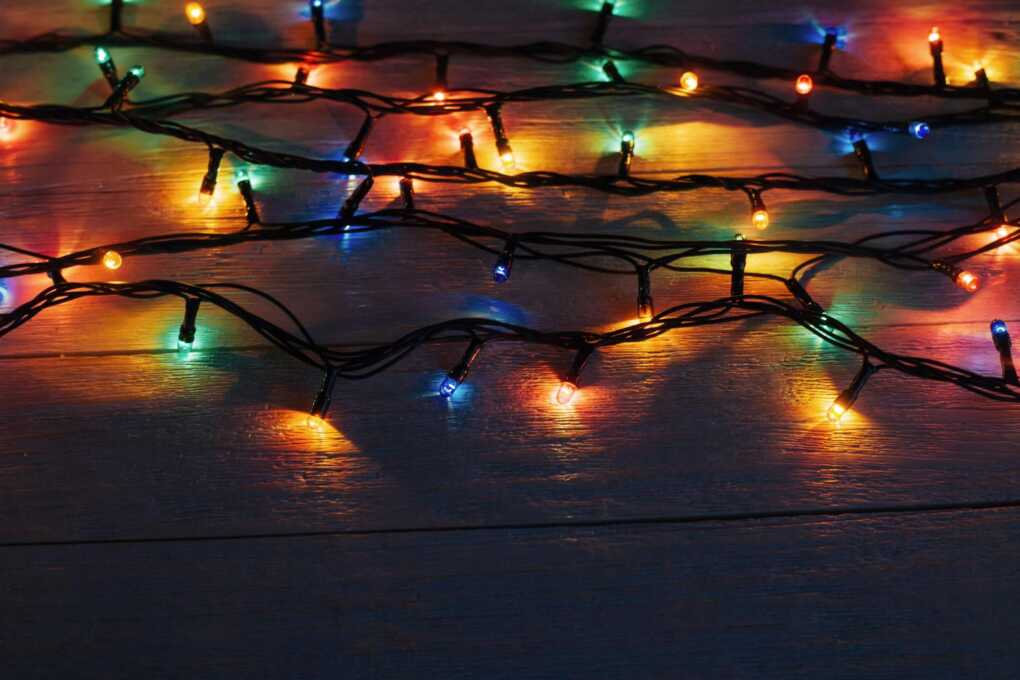
Beyond the bills: Other ways LEDs save you money and hassle
While lower electricity bills and buying fewer bulbs are the biggest money-savers (as we’ve discussed), the benefits of LEDs don’t stop there. There are several other ways these modern lights can save you both money and a good deal of inconvenience.
Reduced maintenance costs, especially for businesses
This is a huge, though sometimes overlooked, saving. Because LEDs last so incredibly long, the need to physically change bulbs is drastically reduced.
✔️ For homeowners, this means less time spent on ladders.
✔️ For industrial and commercial lighting situations, the savings are even more significant. Think about office and commercial settings with high ceilings, or outdoor fixtures like street lights, parking garage lighting, or lights [for] parking garage [lighting and] walkway areas. Changing bulbs in these locations often requires specialized equipment and labor, which costs money. Longer-lasting LEDs mean fewer of these costly maintenance calls.
✔️ This benefit also applies to specialized applications like outdoor area lighting, refrigerated case lighting (where refrigerated case lighting modular LEDs are fantastic), and various modular lighting and task setups. Less frequent changes mean less disruption and lower labor expenses.
Cooler operation: Saving on air conditioning
Remember how we mentioned that LEDs produce very little heat compared to old-fashioned bulbs? (Traditional incandescent bulbs and decorative lights can get surprisingly hot!). This cool operation has another financial perk: LEDs are much cooler than incandescent lights.
In warmer months or in homes and businesses that use air conditioning, the heat generated by lighting adds to the cooling load. Your A/C has to work harder to counteract that heat. By switching to cooler LEDs, you reduce this extra heat, potentially leading to lower air conditioning usage and further energy savings on your cooling bills. It might seem small per bulb, but it all adds up!
Increased safety and durability
LEDs also bring some valuable safety and durability advantages, which can prevent costly accidents or replacements:
☑️ More Durable: Many LED bulbs are made with plastic casings instead of glass, making them more resistant to breaking if accidentally dropped or bumped.
☑️ Cooler to the Touch: The significantly lower operating temperature means no risk of accidental combustion or burnt fingers if you touch the bulb, making them safer around children and pets, or when changing them.
☑️ Reduced Overload Risk: Because LEDs use so much less wattage, there’s a lower chance of overloading a wall socket or circuit, especially when using multiple lights on one circuit, like with LED holiday lights.
Special case: LED holiday lights
Speaking of holiday lights, this is one area where the benefits of LEDs shine incredibly brightly!
LED holiday lights consume less electricity – often a staggering 80-90% less than traditional incandescent holiday light strings. This means your festive displays won’t lead to a shocking electricity bill in January. In fact, holiday lights consume less energy overall when they are LED. Because they use so little power, you can safely connect many more decorative LED light strings end-to-end without risking an overload. They are also more durable, and often, if one bulb in an LED string could still burn out (though it’s rare), the rest of the string often stays lit, unlike old strings where one failure meant the whole thing went dark. The energy savings and convenience that LED holiday lights consume far less power make them a clear winner for festive decorating.
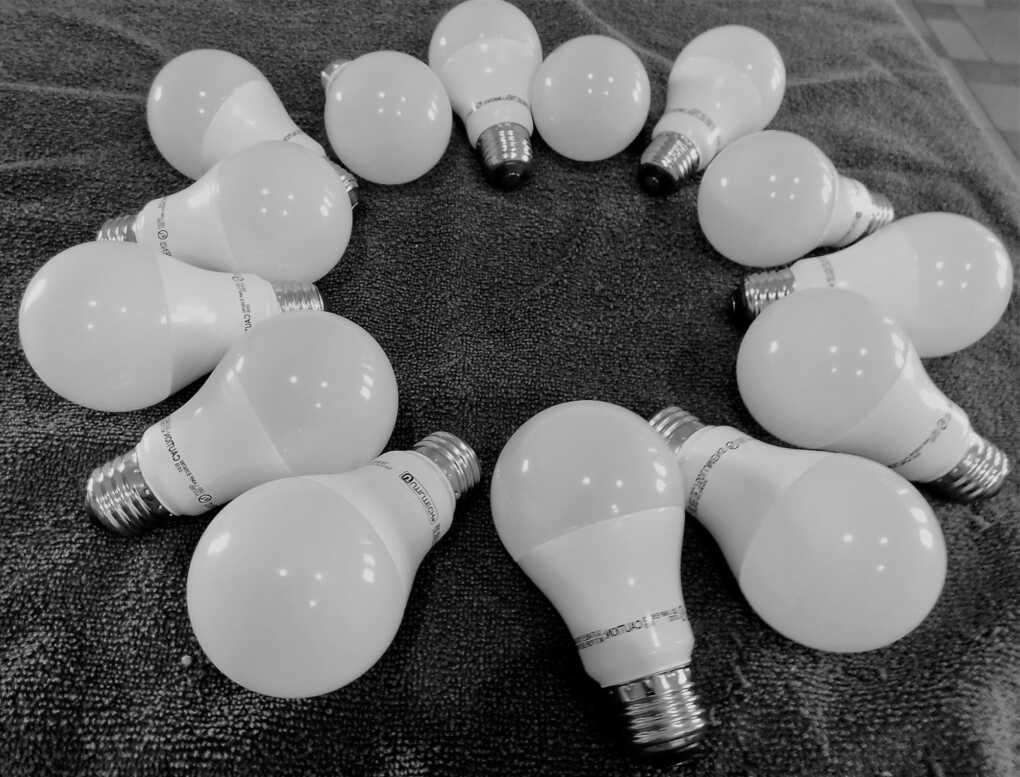
What to consider when buying LEDs
You’re now armed with a lot of great information about how LEDs can save you money and the practical steps to get started. But before you rush out to buy, it’s important to know that not all LED bulbs are created equal. To ensure you get all those fantastic benefits like long life and energy savings, here’s what to consider when looking for quality.
Don’t just go for the cheapest option
It’s true that the dropping prices for LED lamps have made them much more affordable, which is fantastic news for everyone. However, resist the temptation to simply grab the absolute cheapest bulb you can find, especially if it’s from an unknown brand.
✔️ Ultra-cheap bulbs might cut corners: This could mean lower-quality components, which can lead to the bulb not lasting as long as promised or not performing as well (e.g. flickering, poor light color).
✔️ Value over initial price: Investing a little more in a good quality LED bulb from a reputable brand often means you get a more reliable product that delivers the long lifespan and energy efficiency you expect. This provides better value in the long run.
Think of it as an investment: a quality bulb will pay you back through consistent performance and a longer service life.
Read reviews and check warranties
Before making a purchase, especially if you’re buying multiple bulbs, it’s wise to do a little homework:
☑️ Read user reviews: See what other people who have bought and used the bulb are saying. Reviews can give you real-world insights into the bulb’s performance, how true its color is, and whether it lasts as long as claimed.
☑️ Check the warranty: A manufacturer that offers a longer warranty (e.g. 3, 5, or even 10 years) is typically more confident in the quality and lifetime of their LED lighting products. A good warranty can protect your investment if a bulb fails prematurely.
Taking these extra steps can help you choose high-quality LED bulbs that will reliably light up your home and deliver those welcome savings for years to come.
Conclusion – The bright future: LEDs are here to stay
As we’ve explored, making the switch to LED lighting isn’t just a fleeting trend; it’s a smart, practical decision with lasting advantages. From understanding how their efficiency works to calculating your savings and choosing the right bulbs, it’s clear that LEDs offer a brilliant way to light up our lives.
Let’s quickly recap the main takeaways:
✅ LEDs offer significant energy savings, directly reducing your electricity bills.
✅ They boast an incredibly long lifespan, meaning less money spent on replacement bulbs and less hassle changing them.
✅ Beyond the direct cost savings, they offer benefits like cooler operation (which can help with A/C costs) and increased safety and durability.
The numerous LED lighting benefits make them a compelling choice for anyone looking to cut household expenses and be a bit kinder to the environment. All the advantages related to LED lighting point towards a more efficient and economical way of living.
If you’re still a bit hesitant, remember you don’t have to change every bulb in your house overnight. Why not start small? Try replacing the bulbs in just one room, or even just a few of your most frequently used lights. You’ll quickly see the difference in light quality and, over time, the impact on your energy bills.
The technology behind LEDs is energy efficient and rapidly developing. What diode LED is today’s most advanced lighting solution for most applications is clear, and it’s set to fundamentally change the future of how we illuminate our world. By embracing LED lighting, you’re not just saving money; you’re investing in a brighter, more sustainable future, one bulb at a time. So, go ahead and make the switch – your wallet (and the planet) will thank you!
